Window treatments can totally change the vibe of a room, but wow—so many folks make the same mistakes when picking and hanging them. I’ve lost count of how many beautiful spaces just miss the mark because someone stuck curtains or blinds in the wrong spot. Honestly, the top mistake? People hang curtain rods way too close to the window frame, which just shrinks the room and hides your windows.
Remember to repin your favorite images!
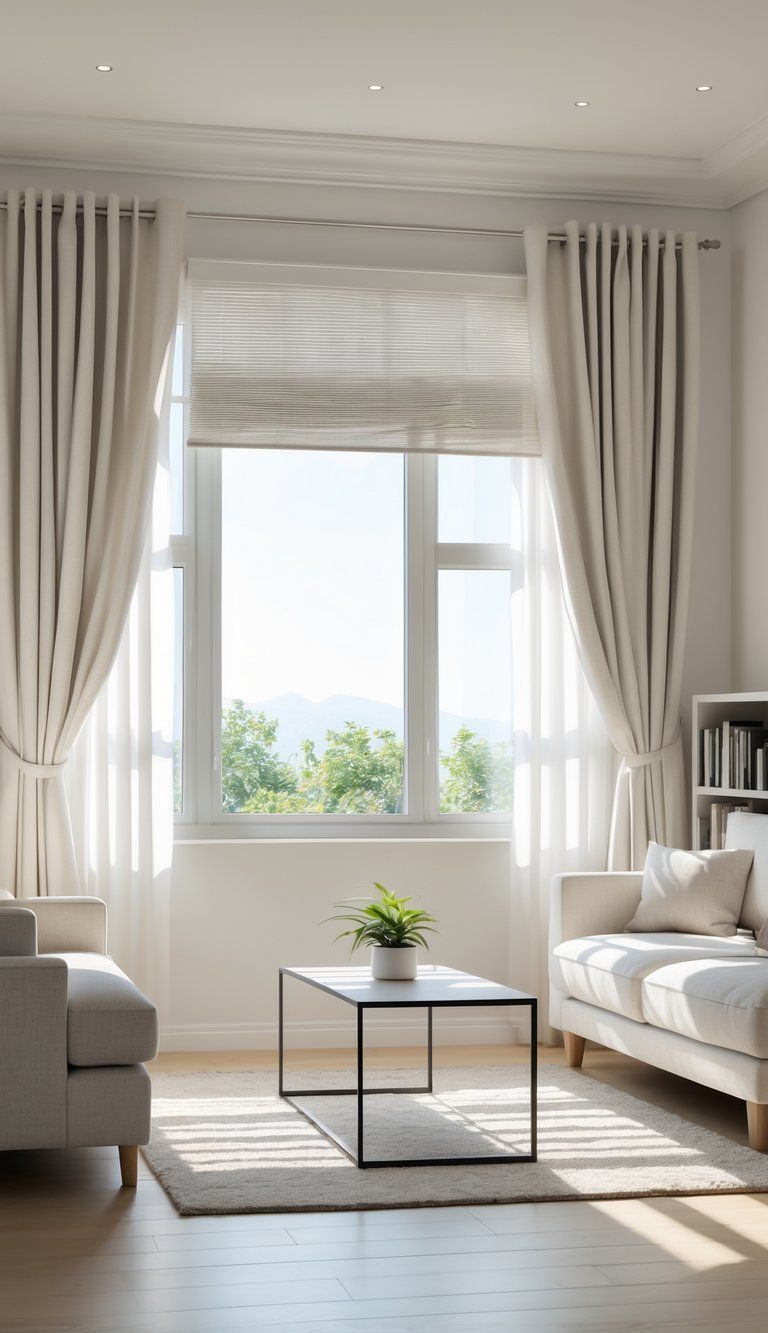
Choosing the wrong material hurts too. Sure, natural wood blinds look gorgeous, but put them in a humid bathroom or kitchen and you’ll regret it—they warp fast. Too many layers of window treatments just clutter the view and block out all that great sunlight, making the place feel kind of gloomy.
When you start planning, think about how you’ll actually use the space. It’s easy to get hung up on looks, but don’t forget about function. Your curtains and blinds need to balance privacy, light, and insulation—and still fit your style. Give it a little thought now and you’ll dodge a lot of headaches later.
Understanding the Importance of Window Treatments

Window treatments aren’t just for show. They play a pretty big role in your comfort, privacy, and even your energy bills.
Balancing Privacy and Natural Light
You want privacy, but you also want sunlight. Sheer curtains let in the light but don’t really give you much privacy. In bedrooms and bathrooms, you’ll probably want something that blocks more.
Try layering different treatments. Maybe pair blinds with curtains so you can adjust privacy as needed. Light-filtering shades work great in living rooms where you want privacy but not a cave.
Top-down, bottom-up shades are smart. They let you cover just the bottom half of your window, so you get sunlight up top and privacy below.
Think about where your windows face. If they’re street-facing, you’ll need more privacy than if they look out over a private yard.
Enhancing Aesthetic Appeal and Curb Appeal
The right window treatments can totally change a room. They add color, texture, and interest to what might just be a blank wall.
Uniform window coverings look polished from the outside and boost curb appeal. Don’t forget to check how your treatments look from both inside and out.
Match the treatments to your home’s vibe. Modern spaces look best with simple, clean lines. Traditional rooms can handle fancier drapes.
Hardware matters too. Good rods, finials, and tiebacks can really finish off the look.
If your room lacks a focal point, bold curtains can draw the eye right where you want it.
Improving Insulation and Energy Efficiency
Window treatments aren’t just pretty—they help with your energy bills. Windows can lose up to 30% of your home’s heat in winter.
Thermal curtains and cellular shades trap air, adding insulation against heat and cold. That extra layer keeps your house warmer in winter and cooler in summer.
Pick your fabrics wisely. Heavy stuff like velvet insulates better than something light like cotton or linen. White or reflective backings boost efficiency too.
Close your window treatments during the hottest part of summer days to keep rooms cooler. In winter, open them up when it’s sunny and close them at night to keep the heat in.
Some treatments even qualify for tax credits or rebates. Check with your utility company—you might get a nice surprise.
Most Common Window Treatment Mistakes
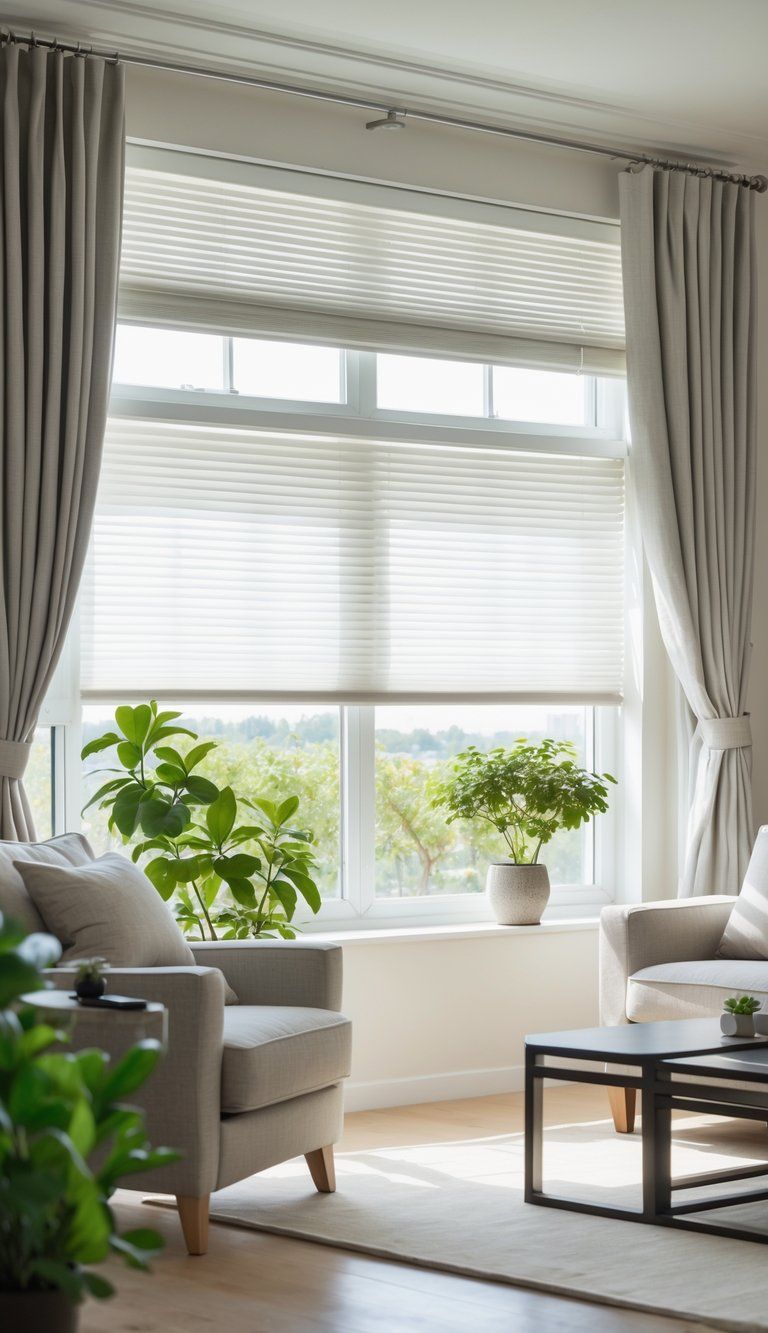
Window treatment mistakes can mess with both the style and function of your space. A lot of these slip-ups happen when folks don’t look at the big picture.
Choosing Inappropriate Window Treatments
Picking window coverings that don’t fit your home’s style just looks off. Heavy drapes can swallow a small room, while skinny treatments make big windows look awkward.
Check the scale of your windows and your room before you decide. Floor-to-ceiling drapes look fantastic with high ceilings, but not so much in a low-ceilinged space.
Materials matter too. In sunny spots, thin fabrics fade fast. In humid places, heavy fabrics might get moldy.
Don’t forget about safety. Cords on blinds can be dangerous for kids and pets. Go cordless or look for safety features when you shop.
Ignoring the Style and Purpose of the Room
Each room has its own needs. Bedrooms often need blackout options for sleep, while kitchens need something you can wipe down easily.
Your living room might need light filtering and good looks, but a home office needs glare control.
The overall design style is important. Modern homes usually look better with simple blinds or panels. Traditional spaces can handle more dramatic treatments.
Think about how you actually use the room. High-traffic areas need durable, easy-to-use options. Formal rooms can handle something a little fancier.
Disregarding Functionality and Light Control
People often focus on looks and forget what they need day-to-day—like privacy or blocking out light. Without planning, you might end up with pretty curtains that let in way too much light or blinds that just aren’t private enough.
Which way does your window face? South-facing windows get blasted with sun, so you might want UV-protective treatments. North-facing windows might need something that lets in as much light as possible.
Think about different times of day. Some rooms need adjustable options for changing light and privacy needs. Layering, like sheers with blinds, gives you lots of flexibility.
Don’t overlook energy efficiency. The right treatments help insulate your home and can lower your bills. Look for thermal options that keep heat in during winter and block it in summer.
Mistakes in Choosing Materials and Types
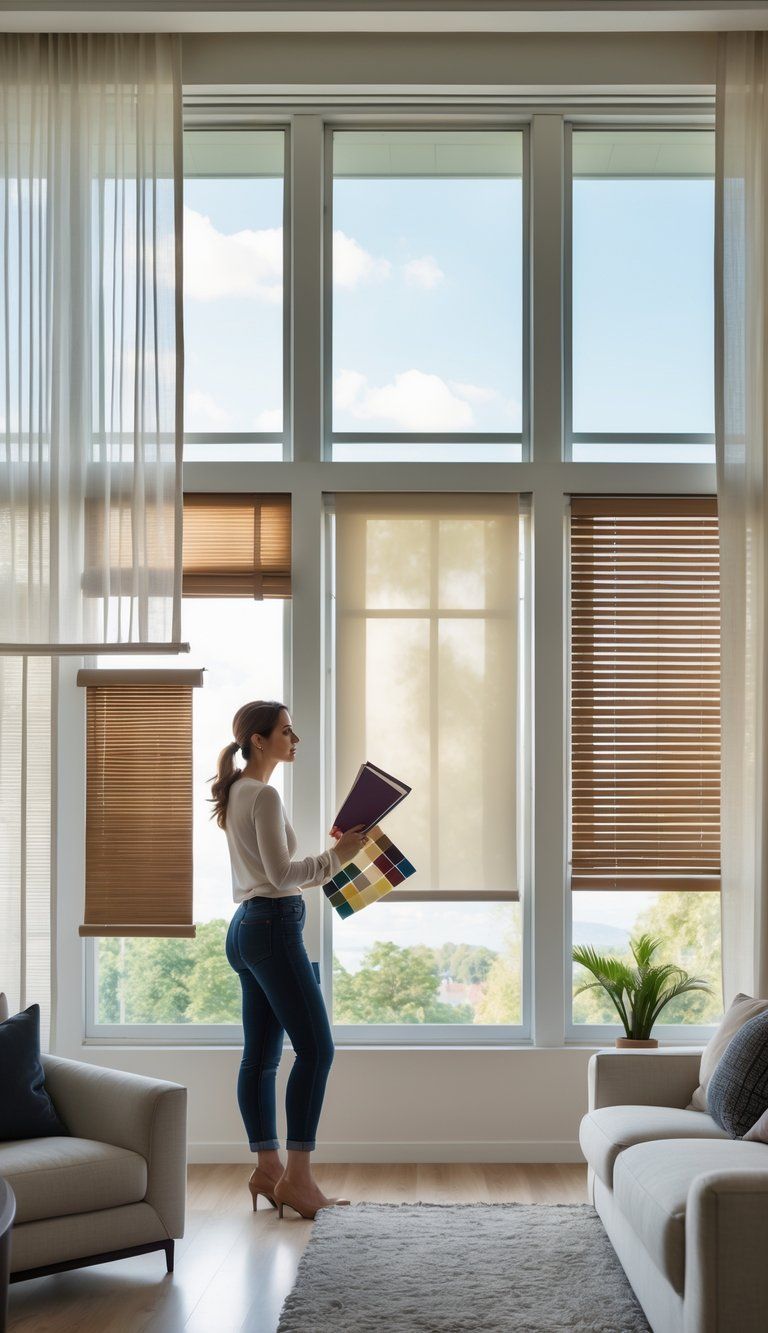
Picking window treatments isn’t just about what looks good. The material and type you choose really affect how well they work and how long they last.
Overlooking Durability and Maintenance
A lot of people go for looks and forget about how the materials will hold up. In bathrooms and kitchens, natural wood blinds might look amazing, but they’ll warp and crack with all that moisture.
Faux wood works better in humid rooms. You get the look without the risk of damage.
Fabric choices matter too. Heavy drapes in sunny rooms will fade in no time. Go for UV-resistant fabrics if your windows get a lot of sun.
Maintenance is a big deal. Fancy pleated shades or detailed drapes look nice but can be a pain to clean. If you don’t want to spend your weekends dusting, stick with washable curtains or easy-to-wipe blinds.
Misusing Blackout, Sheer, or Roman Shades
Blackout curtains are perfect for bedrooms, but they can make other rooms feel like caves if you use them everywhere.
Sheer curtains add a soft touch, but don’t expect much privacy from them on their own. They work best when you layer them with heavier drapes or blinds, so you can change things up as needed.
Roman shades are tricky. If you pick the wrong fold style, they can stack up and block your view. Make sure they fold up neatly.
Think about what the room is for. Media rooms do well with blackout shades, while kitchens need something easy to clean.
Selecting the Wrong Blinds or Shutters
Blinds come in lots of slat sizes, and that actually matters. Small slats look more traditional but collect dust like crazy. Larger slats feel more modern and are easier to keep clean.
Vinyl blinds might be cheap, but they tend to yellow or crack in the sun. Aluminum blinds dent easily. It’s worth spending a bit more for quality.
With shutters, measuring wrong is a big problem. Even being off by a quarter inch can leave gaps or make them hard to open.
Consider how your windows open before you pick blinds or shutters. Casement windows that swing out need different treatments than double-hung windows. The wrong type can make your windows tough to use.
Sizing and Installation Errors
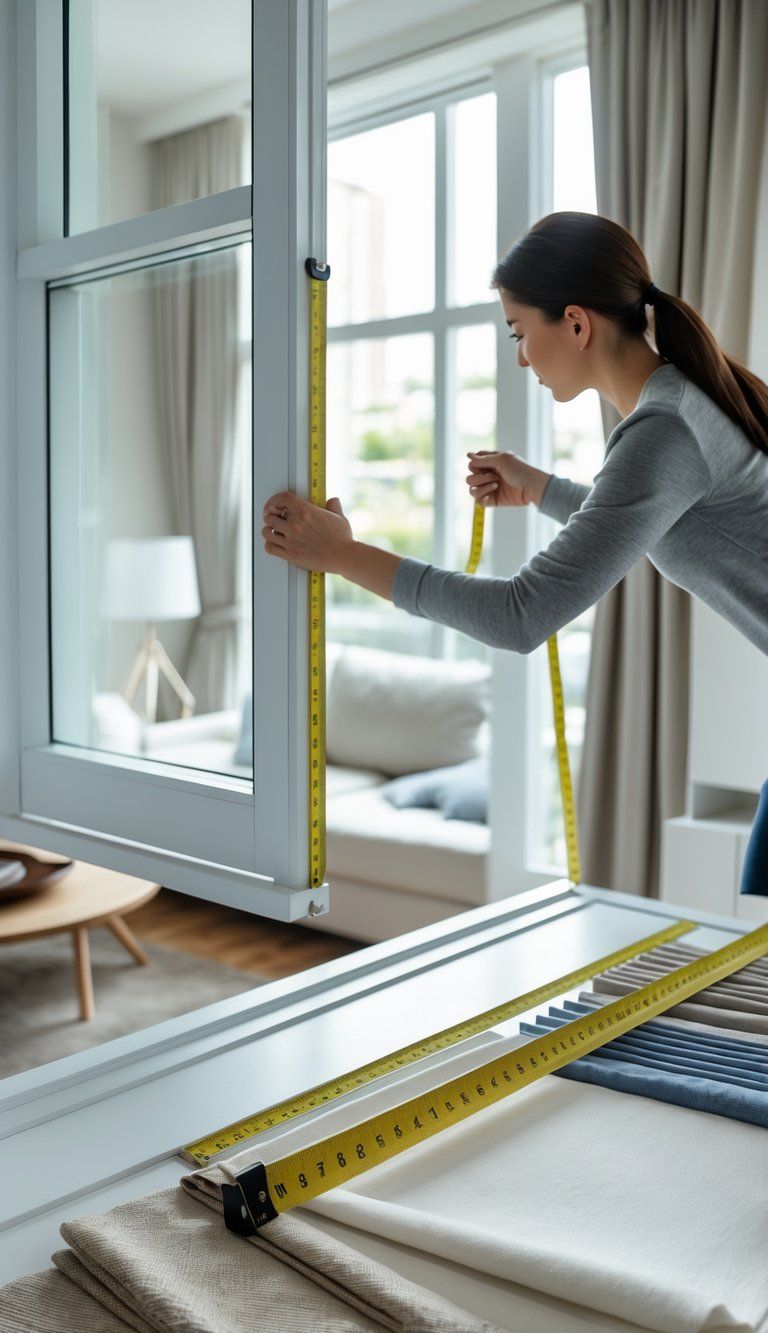
Getting the size and installation right is huge. Rushing this step can lead to expensive mistakes and window treatments that just don’t work or look right.
Incorrect Window Frame Measurements
Accurate measurements are the first step. Too many people just measure the glass, not the whole frame, and end up with treatments that don’t fit.
Always measure the window frame from outside edge to outside edge, not just the glass.
For inside-mount blinds and shades, measure the inside width at the top, middle, and bottom—use the smallest number. For outside-mount, add a couple inches on each side for coverage.
Height matters too. For floor-length curtains, measure from where you’ll hang the rod down to the floor. Subtract half an inch for a “floating” look, or add a couple inches if you like fabric puddling on the floor.
Improper Placement and Hanging Height
Where you hang your window treatments changes everything. Mounting curtain rods right above the window frame makes ceilings look lower and windows smaller.
Try hanging rods 4-6 inches above the frame, or even halfway between the frame and ceiling. This makes windows look taller and rooms feel bigger. Extend the rod a few inches past each side of the window so curtains can stack beside the window when open.
Sometimes it’s worth hiring a pro, especially for tricky installations or lots of windows. They’ll make sure everything’s level and sturdy, so you don’t end up with sagging rods or damaged walls.
Hardware and Accessory Mistakes
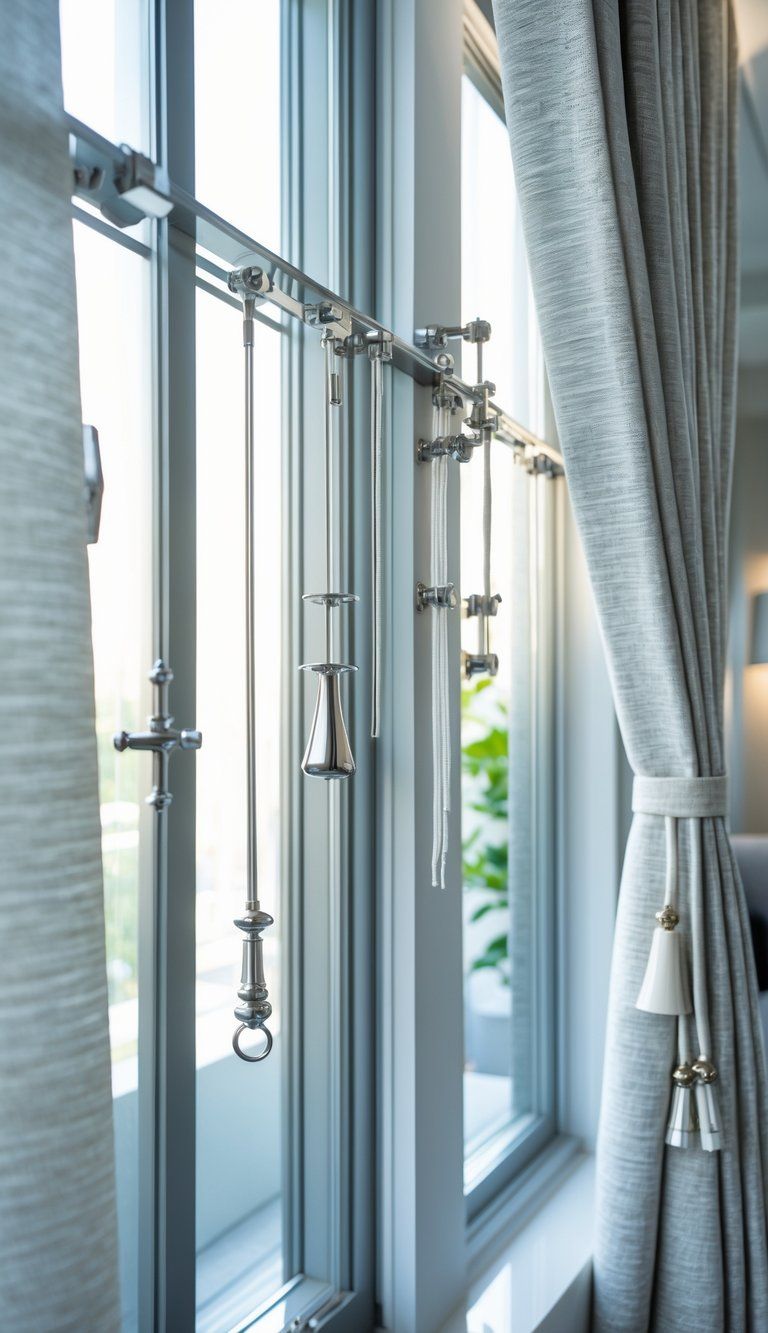
Hardware doesn’t always get the attention it deserves, but it makes a big difference. Some people focus on fabric and style, then skimp on good rods, brackets, or proper installation tools.
Undersized or Weak Curtain Rods
Using curtain rods that are too thin is such a common mistake. If you hang heavy drapes on a skinny rod, it’ll sag in the middle and look sloppy.
Go for rods at least 1-1.5 inches thick for heavier curtains. Metal rods usually hold up better than wood or plastic.
Rod length matters too! Make sure it extends 8-12 inches past the window frame on each side. That way, curtains can stack back fully and let in more light.
If your windows are wide (over 6 feet), add a center support bracket to stop the rod from sagging—even if it’s a sturdy one.
Overlooking Quality Hardware and Stack Back
Quality hardware is more than just functional—it can really pull a room together. If you’ve got mismatched or outdated curtain rods and hooks, the whole space can end up looking a bit neglected, even when everything else feels fresh and new.
Stack back is the space your curtains need when they’re fully open. People often forget about this detail, and then the curtains end up blocking the window even when you pull them back.
Here’s what you should do:
- Use about a third of the rod length for stack back space.
- Mount your hardware 4-6 inches above the window frame.
- Extend rods 8-12 inches past the window on each side.
Don’t overlook finials, brackets, or tiebacks. These little things add a finished look and should go with your other hardware—think doorknobs or light fixtures.
Neglecting Modern Solutions
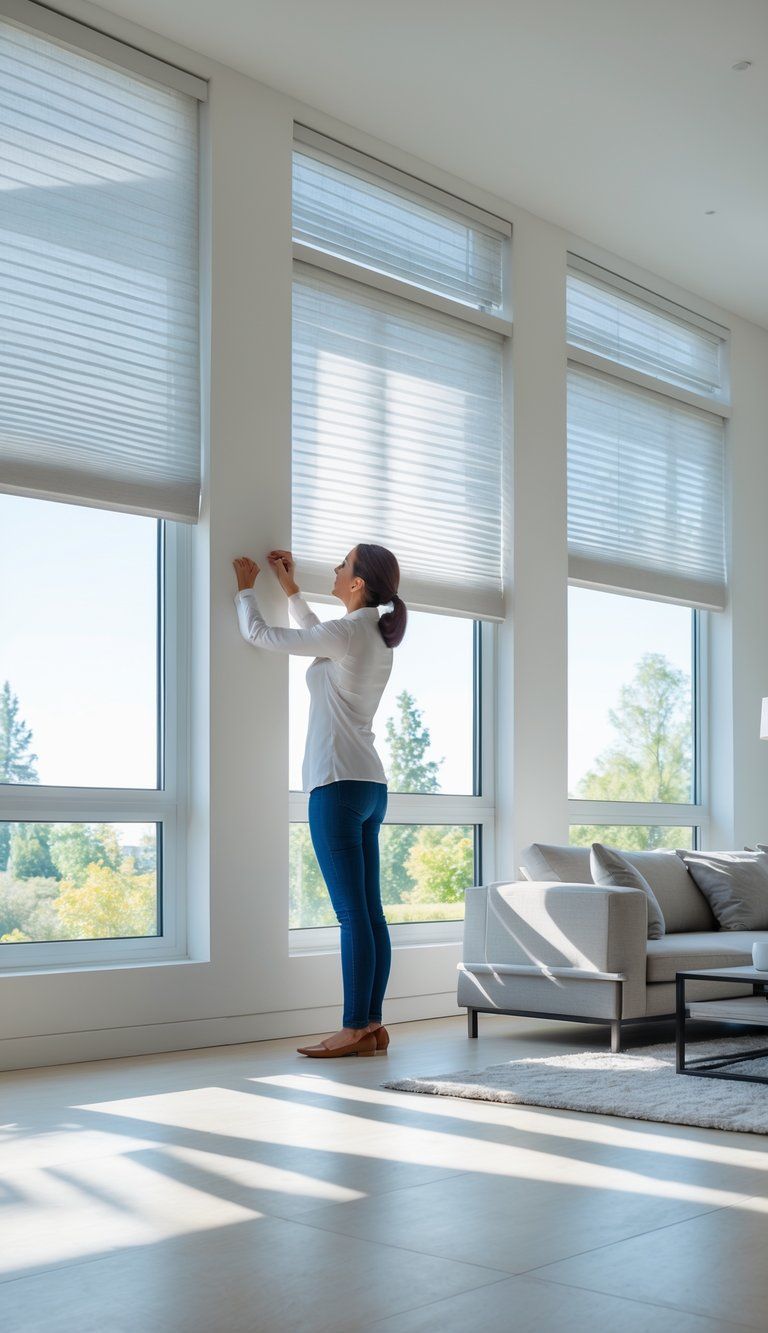
Window treatments have evolved a lot lately. It’s easy to miss out on new tech and eco-friendly options that could make your home more comfortable or efficient.
Failing to Consider Motorized Blinds
Motorized blinds are a huge leap forward, but a lot of people ignore them. You can control these blinds with a remote, your phone, or even your voice if you’re into smart home stuff.
If you’ve got windows above stairs or in rooms with high ceilings, motorized options make life so much easier. No more climbing on chairs or struggling with awkward poles just to get some sunlight.
Smart home integration is another big plus. Imagine your blinds opening slowly in the morning to help you wake up, or closing themselves during the hottest part of the day to keep things cool.
Yeah, the upfront price is higher than standard blinds. But honestly, the convenience and potential energy savings can make it worth it. Many systems now run on batteries, so you don’t have to mess with complicated wiring.
Ignoring Environmentally Friendly Options
Plenty of people stick to traditional window treatments and never check out eco-friendly alternatives that can lower both their carbon footprint and their energy bills.
Cellular (honeycomb) shades trap air in pockets, which helps insulate your home. You’ll stay warmer in winter, cooler in summer, and you might even cut energy costs by up to 20%.
Bamboo and other sustainable materials look beautiful and come from renewable sources. They usually need fewer chemicals to produce compared to synthetic options.
Solar shades block UV rays but let you keep your view. They help protect your furniture from fading and can reduce cooling needs in the summer.
If you want to go even further, look for window treatments made from recycled materials or those with GreenGuard certification. That means fewer chemical emissions, better indoor air quality, and a happier planet.
Ensuring Longevity and Functionality
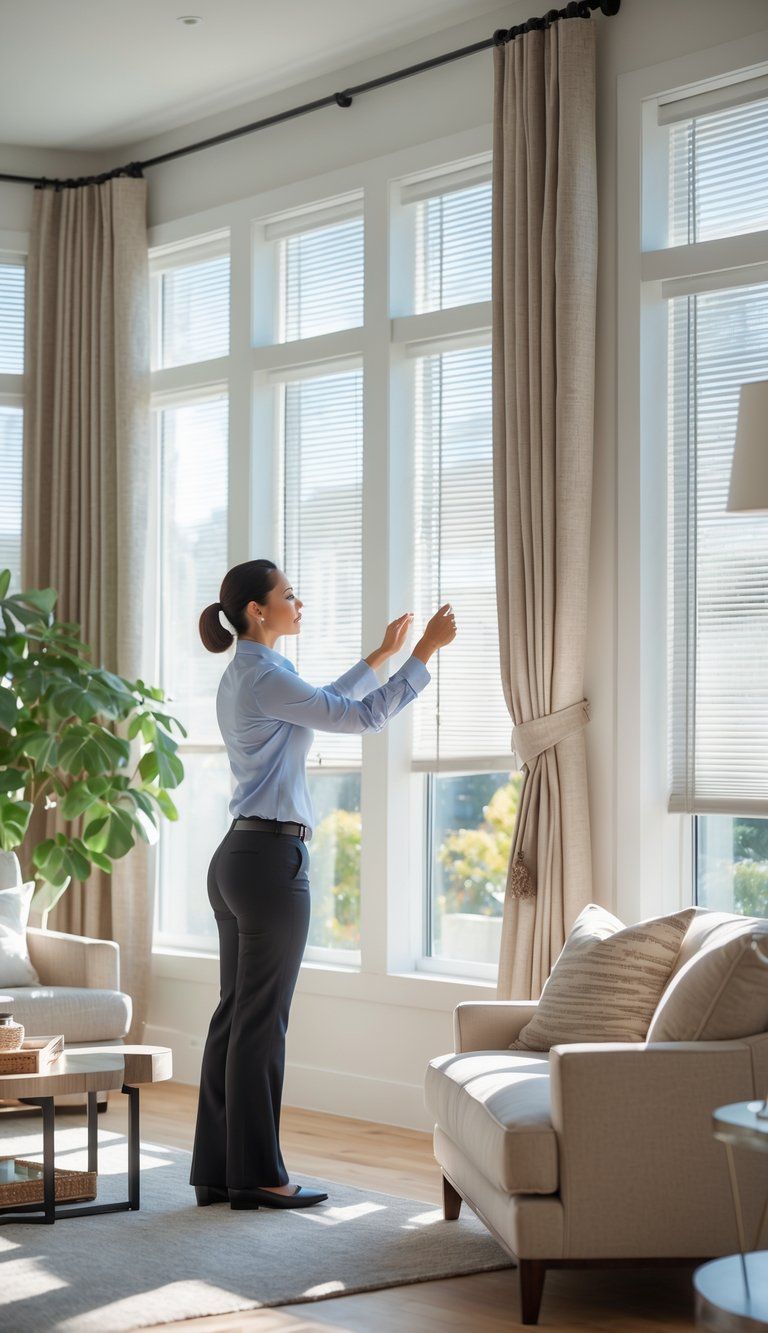
Window treatments can last for years if you take care of them. Maintenance keeps them looking good and working the way they should.
Maintaining and Cleaning Window Treatments
Different materials need different cleaning methods. Fabric curtains usually need gentle washing or professional cleaning every 6-12 months, depending on your home.
Blinds need regular dusting. Grab a microfiber cloth or use your vacuum’s brush attachment every week to keep dust from piling up. For wood blinds, stick to a slightly damp cloth—too much moisture can warp the slats.
Cellular shades are a little delicate. Blow dust from the honeycomb pockets with compressed air or a hairdryer on the cool setting.
Set up a cleaning schedule:
- Weekly: Light dusting
- Monthly: A more thorough clean
- Seasonally: Deep cleaning or call in a pro
Always check the manufacturer’s instructions before you start cleaning. The wrong products can ruin finishes or even void your warranty.
Knowing When to Replace or Upgrade
Most good window treatments stick around for about 7 to 10 years. Still, you might notice a few signs that it’s time for a change.
Keep an eye out for these things:
- Operational issues: Do your blinds stick, jam, or just refuse to move smoothly?
- Visible damage: Maybe you spot frayed cords, bent slats, or torn fabric.
- Fading: Has the sun bleached the color out of your shades?
- Outdated mechanisms: Old cords can be a safety hazard, especially if you have kids around.
If your energy bills keep creeping up, you might want to look at more efficient options. Cellular shades, for example, insulate better and can actually help keep costs down.
Modern motorized treatments are pretty convenient too. You can even hook them up to your smart home system if that’s your thing.
When kids show up in your home, swap out those corded window treatments for cordless alternatives. It keeps the little ones safer and, honestly, gives your space a fresh, updated feel.

